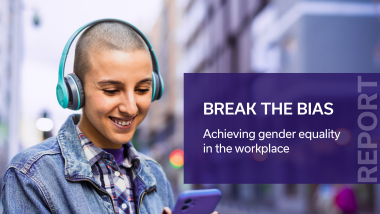What Diverse Hiring measurements really matter?
It’s widely acknowledged that Diverse Hiring and inclusion initiatives equate to a more equitable and inclusive workplace, but it also has a tangible impact on business performance and innovation.
The strategic imperative is multi-fold and far-reaching - different backgrounds and experiences bring different perspectives that are proven to lead to faster problem solving, better decision-making, more creativity, higher employee engagement and overall, improved business outcomes.
However, many organisations are unsure where to start, and what to focus on. Obtaining a benchmark of the diverse hiring ‘status quo’ metrics is a great place to start, providing your HR teams with the baseline in which to identify key pitfalls and set correctional activities placing them on a direct path to improve.
What is a diverse hiring metric?
Diverse Hiring metrics are data points that organisations use to measure diversity and inclusion within their recruitment funnel and employee population. They help HR teams track progress and adjust organisational priorities right across the employee lifecycle – recruitment, retention, and advancement of employees from diverse backgrounds.
Some of the most common impactful metrics to look at when devising a Diverse Hiring strategy include:
- Employee population demographics: The percentage of employees from different demographics and underrepresented groups, including gender, ethnicity, age, sexual orientation, and disability status, are key to identify gaps and provide immediate areas of improvement for your diverse hiring agenda. The level they are represented within the organisation is also important – having insufficient representation in decision-making spectrums may reinforce unconscious bias and existing glass ceilings.
- Talent attraction metrics: A deep dive into available data obtained from your talent attraction, sourcing and referral channels can help you identify where your candidates are coming from. This provides a platform to organisations to tailor their candidate attraction and sourcing approach to increase referrals and applications from underrepresented talent.
- Recruitment and hiring process metrics: Tracking hiring ratios, right through the recruitment process to hire, provides good data to ensure a diverse pool of candidates is being considered at each stage of the recruitment process – from initial application to shortlist, interview to selection – and holds up the mirror to business units or locations where there needs to be a more consistent, transparent approach.
- Retention, promotion and engagement metrics: Monitoring attrition rates among underrepresented employees against overall workforce metrics will identify if there is any additional turnover reported in specific employee groups. In addition, monitoring promotion rates as compared to overall employee population will identify where more equitable career advancement opportunities need to occur. Satisfaction and employee engagement surveys are an excellent way to measure employees' sense of belonging and inclusion, job satisfaction and career development progression. Ensure you have demographic indicators built into the survey findings to identify areas for improvement.
It’s important for organisations to use a combination of these metrics to gain a comprehensive understanding of their diversity and inclusion efforts and make data-driven decisions to foster a more diverse and inclusive workplace.
What diverse hiring metrics should matter to your organisation?
The concept of diversity is constantly in flux, as societies and organisations adapt to ever-changing demographic make-ups. However, progress cannot be accurately evaluated if the goalposts keep moving – it will be key to choose metrics that measure reliable, relatively stable objectives. We list some of these below:
- Your strategic goals: Your Diverse Hiring objectives may be standalone at this point or form one part of an overarching ESG strategy – no matter the priorities, the yardsticks must directly correspond to these goals. Regardless of your current stage of maturity with their diverse hiring initiatives, the true measure of success is consistent and continuous improvement. This endeavour may depend on changing incremental goals and indicators, but the presence of said data-led insights at every stage of growth is essential to enacting meaningful change.
- Availability of data points: Data is everywhere within your organisation, but being able to access, process and maintain these streams is a staggering task in itself. When seeking out metrics to focus on, care must be taken to ensure that such information flows are consistently procured in standardised ways that allow for proper comparisons. The absence of such data points may also be telling indicators for change required. For instance, the lack of social channels for underrepresented talent to communicate concerns towards better inclusion could point towards a dangerously low proportion of talent within the demographic.
A good place to start identifying and measuring metrics is via an impartial analysis conducted by external experts, like the Recruitment Inclusivity Audit. The data that you eventually capture will help you understand the recruitment stages where you’re losing your talent and provide insight about how to better present your organization to prospective talent and other observers.
Partnering with a Diverse Hiring expert will help you attain that data visibility. From assessing outreach effectiveness to examining the way your job ads are worded and the imagery you’re using; all the way through to the effectiveness of the recruitment process and onboarding experience, you can drill down to a granular level of detail on all aspects through interactive dashboards that consolidate and visualise this critical information.
Is diversity high on your list of hiring priorities, but not sure where to start or how to measure success? Our Diverse Hiring solutions have helped our global partners create deliberate, measurable and impactful diverse hiring outcomes. Explore our suite of award-winning Diverse Hiring solutions today, or contact our Diverse Hiring experts for an exploratory discussion and find out how we can significantly impact your diverse hiring recruitment goals.













